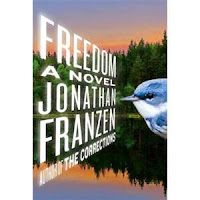“Tell me what you eat, and I shall tell you what you are.”
~Jean Anthelme Brillat-Savarin, 1825
Gary Taubes' second book on health and obesity centers around an intriguing idea that everything we have been told about why people get fat is wrong. Taubes states, “We get fat, our physicians tell us, because we eat too much and/or move too little, and so the cure is to do the opposite.” This mentality is known as "calories-in/calories-out" and essentially says the reason we get fat is when we take in more energy than we expend. Taubes argues convincingly that this thinking is just plain wrong and has helped result in the massive obesity epidemic we are currently facing.
He points out that up until the 1960s most obesity researchers did not define obesity as a disorder of energy balance or eating too much, they believed obesity is fundamentally a disorder of excess fat accumulation. Taubes outlines what regulates fat accumulation.
Essentially, when insulin levels are elevated, we accumulate fat in our fat tissue; when these levels fall, we liberate fat from the fat tissue and burn it for fuel. Secondly, our insulin levels are effectively determined by the carbohydrates we eat. The more carbs we eat, the easier to digest they are and the sweeter they are, the more insulin we will ultimately secrete. Therefore, carbohydrate is driving insulin is driving fat. We get fat because the carbohydrates in our diet make us fat. The science of fat tells us that obesity is ultimately the result of a hormonal imbalance, not a caloric one.
Taubes points out that the official embrace of low-fat, high carbohydrate diets coincided “not with a national decline in weight and heart disease but with epidemics of both obesity and diabetes…”
Taubes' plan to lose weight is pretty drastic for the average person. He recommends cutting out all carbs and sugars and just eating lots of eggs, beef, poultry, fish and certain vegetables low in starches. He also points out that our genes were shaped by the two and a half million years during which our ancestors lived as hunters and gatherers prior to the introduction of agriculture twelve thousand years ago. The popular "paleo-diet" is another example of this type of thinking.
Why We Get Fat is a fascinating book, and is considered to be more user friendly than his first book, the heavily researched, highly scientific, Good Calories, Bad Calories
is a fascinating book, and is considered to be more user friendly than his first book, the heavily researched, highly scientific, Good Calories, Bad Calories . It offers lots of information as to why we crave sweets and carbohydrates (sugar appears to be addictive in the brain in the same way in which cocaine, nicotine, and heroine are). The book was an engrossing read, and I finished it within a few days.
. It offers lots of information as to why we crave sweets and carbohydrates (sugar appears to be addictive in the brain in the same way in which cocaine, nicotine, and heroine are). The book was an engrossing read, and I finished it within a few days.
If you're interested, check out Taubes' Good Calories, Bad Calories as well as his blog for more information on low-carb eating.
as well as his blog for more information on low-carb eating.






















